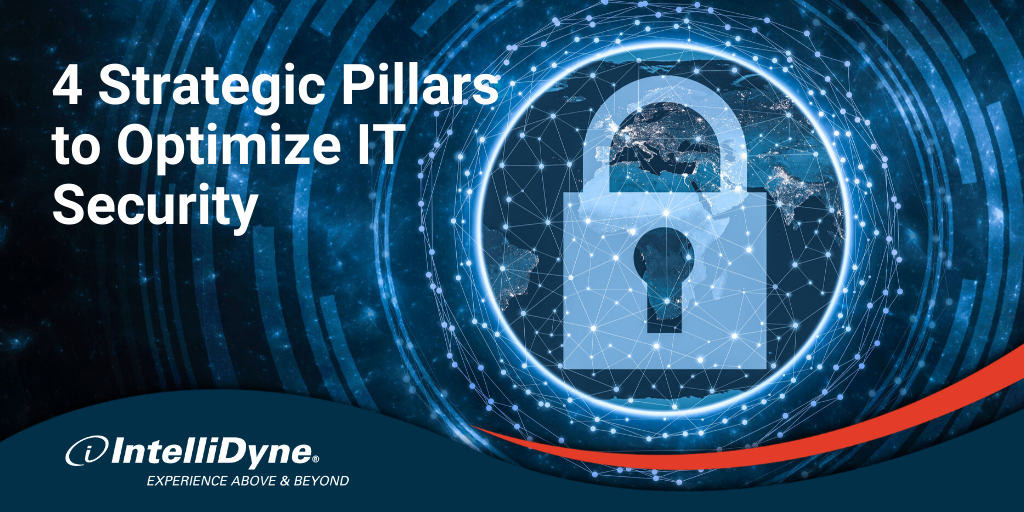Having “well-designed, well-managed continuous monitoring and standardized risk assessment processes” has taken on new urgency with the unprecedented reliance on remote access to computing systems and databases — and the increased potential for security breaches and cyber attacks. So, if you haven’t yet fully ramped up your IT security, it’s time to get it done.
Cyber Security and Information Assurance (IA) practices ensure that data and systems are adequately protected. Implementing a Cyber Security & IA strategy involves determining the protection needed; implementing the needed protective measures; assessing the adequacy of the protection; and tracking, managing, and repeating the process to determine how well the data and system remain protected.
Take a holistic approach for effective protection in cyber space
From assessment through design and full deployment, it’s important to have end-to-end secure content management, encryption, network engineering and management, authentication, intrusion detection, automated monitoring, rapid response and forensics. It’s necessary to take a holistic approach to the process to ensure effective protection.
However, developing and implementing Cyber Security & IA strategy is much like visiting the dentist: You don’t want to do it even though it’s for your own good, you know it’s going to cost you, and you know there will be pain involved. That being said, here is a brief overview of four strategic pillars that you need to include in your Cyber Security & IA strategy to maximize the security of your IT systems while minimizing the cost and the pain.
1: Identify the Role of Information Security to Meet your Business Mission
No matter what agency you’re involved with, your systems include complex computer networks, a large number of internal and external users, and vast amounts of sensitive data. The privacy and security of your data demand that you have a plan in place to thwart attacks — because new attack types are constantly being developed. But Cyber Security & Information Assurance compliance isn’t just a technology issue. It’s also a governance issue. All members of executive management, not just the Chief Information Officer (CIO), need to be involved in policy development and implementation so that compliance is maintained and risk management is employed.
2: Meet the Requirements for Cyber Security and Information Assurance
Your enterprise security environment faces visible and invisible internal and external threats. Ignore one and you’re bound to maximize your risk of exposure. Creating a plan to implement Cyber Security & Information Assurance protocols is essential. There are many legislative acts that prescribe general Cyber & IA regulations. Based on the specific data and systems that your agency works with and varying regulations, the metrics that different organizations use may also vary significantly. It’s absolutely critical that the relevant regulations are understood and complied with, however it isn’t necessary to reinvent the wheel. And, in many cases, the regulations are clear, but the processes for implementation and governance of Cyber Security & IA are not.
3: Introducing Innovation in Cyber Security and Information Assurance
The world of cyber security is evolving rapidly, and in every aspect – from government regulations changing to cyber attacks becoming more and more prevalent and difficult to decipher. As a result of the speed with which the industry is changing, keeping pace is difficult and essential, and to do so requires constant innovation. Technology must be used more effectively, and the appropriate people in departments and organizations across the enterprise should continually be given the tools to do so. This enterprise-wide approach is important to paving the way for a simplified means to security and innovative ways to implement technology.
4: Select a Trusted Partner that Understands Your Mission, not Just the Technology
Set your focus on ensuring that you and your agency know what specifically needs to be done. Cyber Security & Information Assurance management could easily become a commoditized service evaluation once the initial business requirements have been completed. But here, perhaps, lies the largest potential risk in effectively reaching your goals and meeting your mission: Whom should you trust with your Cyber Security & IA requirements?
This is where using a trusted partner to develop and implement your Cyber and IA policies can ensure a streamlined deployment process. There is a significant difference between solution providers who are simply technology-centered and those who understand the business and governance impacts that a Cyber & IA strategy can entail. Ensure that your choice for solution provider is asking not only the important technical questions but also the critical governance questions.
We’re ready when you are to get it done
IntelliDyne’s experience providing cyber security, information assurance, and network operation support services to a number of U.S. Government agencies has given us a deep and comprehensive understanding of the technologies and methodologies needed to successfully manage organizational IT risk. Our mature analytical and engineering approaches offer comprehensive cyber security solutions by applying industry best practices such as NIST’s Cyber Security Framework, DoD’s Risk Management Framework, and the International Organization for Standardization (ISO) 27001. Our processes have been tested, refined and proven through our years of practical experience.
Contact us and let us help you get it done!

